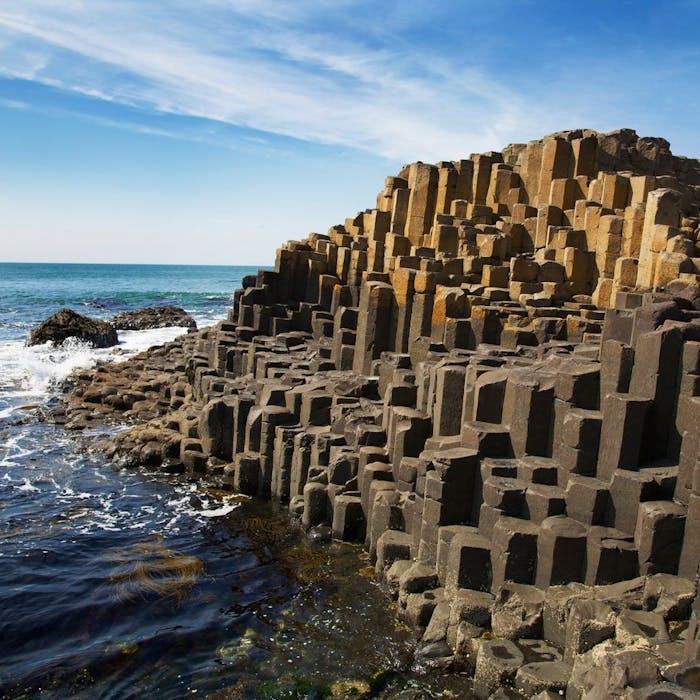
The Giant's Causeway - Northern Ireland's volcanic curiosity
The Giant's Causeway is the name given to the unusual formation of about 40,000 interlocking hexagonal basalt columns - the result of an ancient volcanicfissure eruption - in County Antrim, Northern Ireland. Designated a UNESCO World Heritage Site, it is a significant tourist attraction, and also features in Northern Irish mythology.
About 50 to 60 million years ago, Antrim underwent intense volcanic activity. Highly fluid molten basalt formed a volcanic plateau. As the lava cooled, horizontal contraction occurred. The shape and size of the columns was determined by the speed at which the lava cooled. This process produced the distinctive hexagonal columns seen today.
Another mythic explanation of the Giant's Causeway involves the Irish giant Fionn mac Cumhaill, who was challenged to a fight by a Scottish giant. Fionn accepted, and built the causeway across the North Channel between Ireland and Scotland, in order for the two giants to meet. In one version, Fionn is the victor. In another, Fionn's wife disguises him as a baby, and when the Scottish giant sees the size of this 'baby', he is alarmed that its supposed father (Fionn) is a giant among giants. He flees back to Scotland, destroying the causeway behind him.
Professional interest in the existence of the causeway was first expressed by Sir Richard Bulkeley, in a paper to the Royal Society in 1693. It received international attention when Dublin artist Susanna Drury made watercolour paintings of the feature in 1739. But it wasn't until 1768 that French geologist Nicolas Desmarest suggested in print that the structures were volcanic in origin.
It became a popular tourist attraction during the 19th century - particularly with the 1883 opening of the Giant's Causeway Tramway between Portrush and the Causeway, along which tourist trains still run today. The area is a haven for seabirds, such as fulmar, petrel, cormorant, shag, redshank, guillemot and razorbill, while the weathered rock formations host numerous plant type.
The National Trust took over in the 1960's, and opened a visitor's centre in 2012.
Further reading
Links to external websites are not maintained by Bite Sized Britain. They are provided to give users access to additional information. Bite Sized Britain is not responsible for the content of these external websites.
